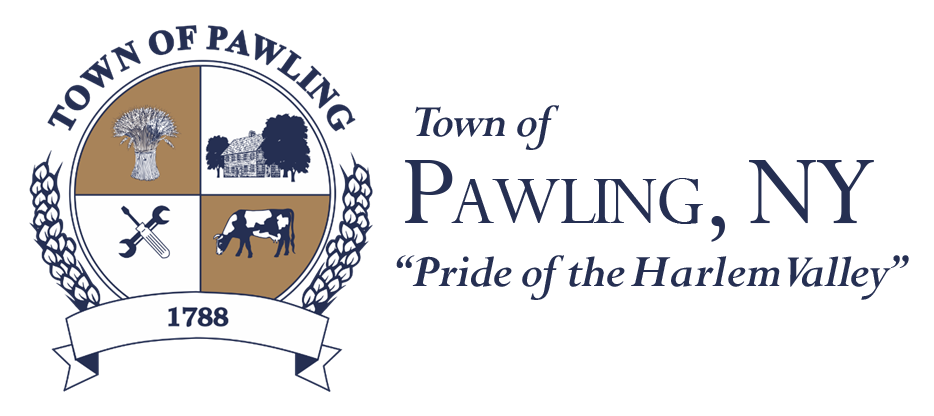Municipal Separate Storm Sewer System
Stormwater MS4 Reports
Stormwater Forms
PLEASE NOTE:
STARTING JANUARY 2, 2018 ALL WORK THAT REQUIRES A TOWN OF PAWLING ENVIRONMENTAL PERMIT WILL HAVE TO PROVIDE A COPY OF YOUR CONTRACTORS TRAINING CERTIFICATE FOR SOIL AND EROSION CONTROL WITH YOUR APPLICATION.
MUNICIPAL SEPARATE STORM SEWER SYSTEMS (MS4)
The 1972 Clean Water Act, enacted by Congress, established a policy to protect and improve the waters of the United States. In 1987, Congress amended the Clean Water Act to require the implantation of a program to address stormwater discharges. Rules were promulgated by EPA to establish a phased approach to implementation of the program which went into effect in 1992. Phase II required NYDES permits for a number of categories of stormwater discharges including industrial activities, construction-related disturbances greater than 5 acres, and larger and medium-sized municipal separate storm sewers (MS4) operators.
The authority to administer the Clean Water Act and the stormwater regulations can be delegated to an individual state, as is the case in New York. In New York administration of the program is the responsibility of the Department of Conservation. The NYSDEC has determined that the East of Hudson Croton watershed reservoir, (which includes 40% of the Town of Pawling) should be considered an additionally designated area and subject to the phase II requirements.
An MS4 is defined as a conveyance or system of conveyance owned by a State, City, Town, Village, or other public entity that discharges to the waters of the United States and is designed or used to collect or convey stormwater. An MS4 is not a combined sewer and is also not part of a publicly owned treatment works (i.e. sewage treatment plant).
There are two ways in which a Municipal Separate Storm Sewer System can be designated as a regulated Small MS4.
- The municipality is part of or drains directly to, an urbanized area of population 50,000 to 100,000.
- The municipality separate storm sewer system drains to a water body that is designated as impaired on the New York State 303(d) list or is in the watershed of a body of water for which a total maximum daily load (TMDL) for pollutants loading has been developed. These are referred to as additionally designated MS4s.
In Dutchess County, the following municipalities are additionally designated MS4s, due to their presence in New York City’s East of Hudson Croton watershed, for which a TMDL has developed:
- Town of Pawling
- Village of Pawling
- Town of Beekman
- Town of East Fishkill
Communities in New York State that are regulated under Phase II Stormwater SPDES Permit GP-0-08-02 for small MS4s are required to have in place a program for pollution prevention. As required by the New York State Department of Environmental Conservation, in March 2003 the Town submitted an application to obtain coverage under the NYSDEC General Permit for MS4 operators. By submitting an application (termed as a NOI) the Town is agreeing to develop, implement, and enforce a Stormwater Management Plan to reduce the discharge of pollutants to the maximum extent practicable. In addition, where stormwater discharges are to a receiving waterbody for which a total maximum daily load has been developed for any particular pollutant, such as the East of Hudson, Croton Watershed.
The Town of Pawling must address six minimum measures that are required in their stormwater program:
Public Education and Outreach on Storm Water Impacts: An MS4 must conduct an ongoing public education and outreach program designed to describe the impacts of stormwater discharges on water bodies, and how the pollutants found in the stormwater can be reduced.
Public Involvement/Participation: An MS4 must design and conduct a public involvement program. In addition, the MS4 must conduct a public hearing on the annual report that is submitted to the NYS DEC. Finally, the MS4 must identify a local point of contact for public concerns regarding stormwater management and compliance with the permit.
Illicit Discharge Detection and Elimination: An MS4 must develop, implement, and enforce a program to detect and eliminate illicit discharges into the storm sewer system. An illicit discharge is any discharge to a storm sewer system, such as a catch basin, drainage culverts, or grass swale, which is not composed entirely of stormwater and which is a significant contributor of pollutants.
Construction Site Stormwater Runoff Control: An MS4 must implement and enforce a program to reduce pollutants in any stormwater runoff from construction activities that result in a land disturbance greater than or equal to 20,000 square feet of land area.
Post-Construction Storm Water Management: An MS4 must develop and implement a program that includes a combination of structural and/or non-structural management practices appropriate for the community that will reduce the discharge of pollutants to the maximum extent practicable In addition, the MS4 must adopt a Town ordinance to address post-construction runoff from new development and re-development projects to the extent allowable under State or local law.
Pollution Prevention/Good Housekeeping For Municipal Operations: An MS4 must develop and implement an operation and maintenance program that is designed to reduce and prevent the discharge of pollutants to the maximum extent practicable from municipal activities, including but not limited to park and open space maintenance, fleet and building maintenance, new construction and land disturbances, stormwater system maintenance, roadway and right-of-way maintenance, marine operations, and hydrologic habitat modification.
An awareness of the location and degree of threat to various water courses in a community is of value to the entire community, wildlife, flora, and fauna. We begin by providing clean water to ourselves.
